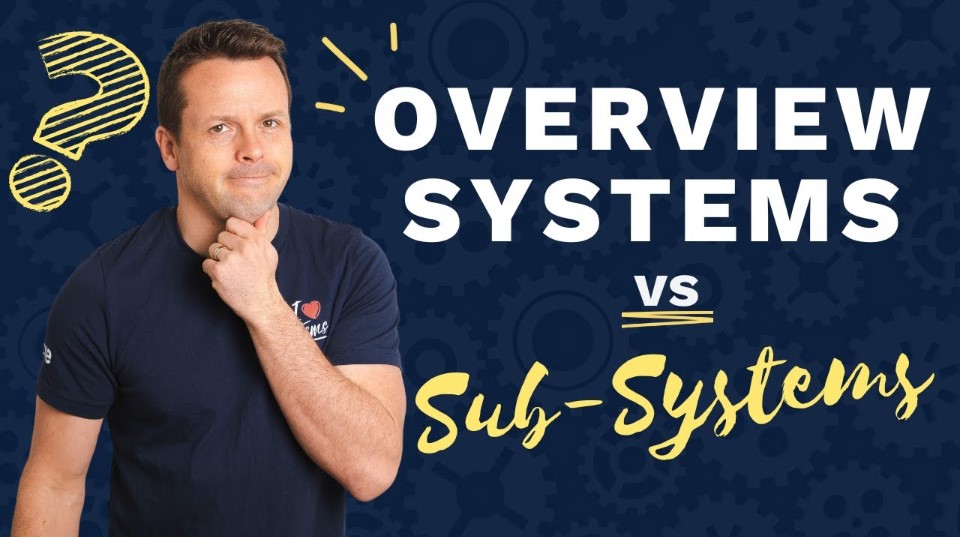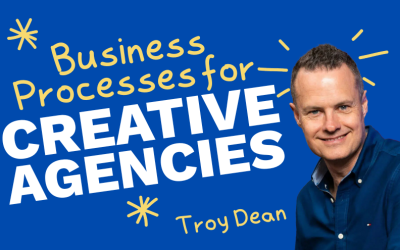How do you set up and use business systems inside your project management (PM) software?
We all know managing large projects can be challenging at the best of times – so it’s critical you get your PM software setup correctly and linked together to your business systems.
The key is to set up an overview system to track and manage the smaller systems that need to be monitored from start to finish.
An overview system will help you:
✅ Monitor the progress of a task.
✅ Understand the critical steps involved.
✅ Identify who is responsible for each step.
✅ Estimate how close the task is to completion.
Arranging your PM software using overview and subsystems is a practical and orderly way to approach the tasks and processes in your business. But not every project requires an overview system. Remember the aim is to simplify, not overcomplicate, It’s up to you to evaluate the complexity and decide if it needs to be broken up or not.
Watch this video to learn more about overview systems and subsystems and how you can apply them to your business systems.
Timestamps:
0:07– Community question about systems
0:59 – System demonstration in Asana
1:24 – What an overview system looks like
2:15 – Subtasks sit underneath the overview system
3:49 – Not all tasks need an overall system/subsystems
4:29 – Response to community question
5:12 – Join our community
Transcription:
Everybody has different project management platforms, and you’ll need to find the subtleties and what will work for you. It doesn’t matter which platform you’re using. I will just give you some logic and you can apply that thinking to the platform you’ve got. Now, we happen to use Asana. I’m happy to show you what we’re doing, I think that’s probably the easiest way to do it. And then you can translate that to what works for you and your business.
For our Concierge product, which is our done-for-you systemology service, we’ve got a template that we duplicate every time someone purchases this particular product. There’s a systemHUB link here that links to what we call our overview system, and there’s a range of different steps as part of the overview system. Sometimes they will also link through to subsystems and extra details. For our concierge service, we’ll have a project manager who oversees the completion of this client project, so they’ll get assigned at this level. It’s their responsibility to keep an eye on everything that’s happening underneath this specific task.
Now, this system is for them. It helps them to understand the milestones, the key steps, and what’s involved with the delivery of our concierge service. You’ll notice there is a range of subtasks underneath. So, most of these subtasks are spelled out in the overall system. The overview system is what the project manager oversees to make sure that everything is done to the appropriate standard, but they might not necessarily be doing every sub-task that sits underneath that overall project. Now, here is a range of tasks that happen as part of our preparation and setup that might get assigned to another team member.
So, for example, one of the things that we do is set up a client’s folder on Google drive. So, you’ll notice there is a link here. This is a subsystem. It sits underneath the bigger system of ‘here’s how to overall complete the entire project to the real specific details of ‘how do I set up the Google Drive folder for the client?’ Now, going to this level of detail isn’t really needed in the overall high-level process especially since there’s a good chance that the project manager might not end up being the person who sets this up. This might be a subtask that’s set up for an administrative assistant. So you can see, these are the steps then on how to complete that. So, with that thinking, you’ll be able to follow along here.
You don’t always need to set it up like this, not all tasks are going to need an overall system and then subsystems. Usually, when we’re talking about the delivery of a core product or service, there might be many moving parts for that to have happened. So, you might start with the overview system and then you’ve got the subsystems, but there will be other tasks inside the business. Maybe it’s just paying wages; you might not need an overview system and then a range of subsystems for that. It might just jump straight into that how-to document.
So I’ll leave it there for now. Hopefully, that provides a little bit of insight. Of course, if you’ve got questions like this you’d like answered, be sure to go ahead and join our community.









